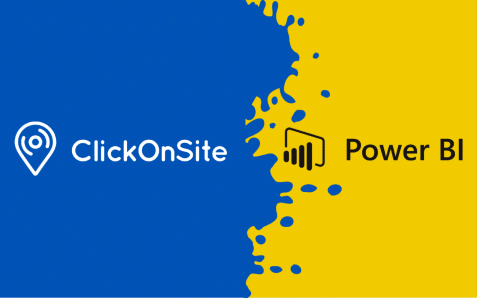
ClickOnSite connects to Power BI
Since its launch in 2016, ClickOnSite offers MNOs and Towercos the opportunity to optimize their performance. Specifically, this includes the teams’ use of the reporting/PMO module, which allows them to create, edit and distribute detailed progress reports within their organization. It also helps to detect potential delays and identifies improvements to be made.
To date, these reports have only focused on the operational aspect to serve experts and technical management audiences. It is based on ClickOnSite’s simplified database, which is easily completed by technicians, the main users of our tool. Besides the importance of data collection, the information must also be analyzed by strategic management to determine its relevance and help in decision making. Therefore, this strategic analysis requires more…
That’s why IT-Development (ITD) has chosen to connect ClickOnSite to the best market BI tools, such as Power BI. The initial proof of concept (POC), designed for the requirements of one of the largest French Towercos, has been operational since mid-February 2021.
Jean Peraud, Business Intelligence (BI) Coordinator and Business Analyst at ITD, explains how he managed the project.
As we are constantly aware of our user’s needs, we quickly realized that the operational reporting part of ClickOnSite could have its limitations for our most advanced clients in terms of strategic analysis. So, we launched a new real-time project. A project carried out alongside one of the largest French Towercos.
Our goal? To boost ClickOnSite and offer an ultra-high-performance analysis solution to drive telecom activities and help make strategic decisions.
This was not easy. So, a first test was carried out with the help of the Kibana software. Unfortunately, it did not meet 100% of our client’s expectations. In practice, we wanted to satisfy our customers, and we were limited as soon as a complex request was submitted. It was impossible to go beyond simple graphics so we continued our research and chose the Power BI tool.
Now, our customers can access reporting options in four steps:
To access, retrieve and use the data, new technical adjustments were necessary.
The strength of ClickOnSite is its ability to support many types of fields (such as date, terminology, fields calculated with prefix or suffix, authority fields, etc.). However, it can be constrained in such a situation. This diversity has generated data recovery difficulties as some fields are naturally more complex than others.
This succession of technical actions finally results in a database reconstruction in Power Bi. Fortunately, from a customer’s point of view, this manual work is invisible. This job is linked to the specific skills of our Business Analysts.
The client also has some actions to carry out. Once the database has been reconstructed, their task is to deeply know it to find out the right information, and then, use it.
Here again, we keep listening to them and will soon offer a new support service adapted to each need.
Jean Peraud says:
"Today we have chosen to use Power BI to meet a specific customer requirement. Production deployment is already planned for this spring and we are here to support our customers throughout the entire process: from connection to adoption to build their database and even their reports."
Jerome Perret, CEO of ITD, concludes:
"Obviously, these tools are very interesting for us. It is a complementary solution to ClickOnSite and it is fairly cost-effective. It enables us to cover all the reporting needs of our customers, either ClickOnSite users or Comex members. Of course, if necessary, we are able to adapt our software to other BI tools."
Although Howard Dresner was the first to use the term Business Intelligence in 1989, its origins appear in the 1860s. It refers to the use of a range of tools, applications, and methodologies to collect and analyze data to improve decision-making and business performance.